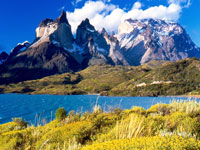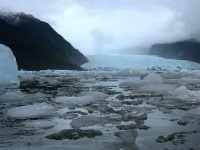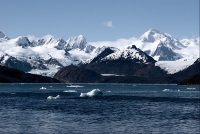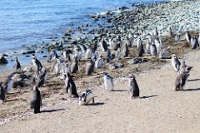Things to do in Chilean Patagonia
Chilean Patagonia boasts some of the most astoundingly beautiful and diverse wilderness areas in the world and vast swathes of this adventurer's paradise remain unspoilt and unpopulated. It is therefore no surprise that the majority of things to see and do in Chilean Patagonia revolve around natural wonders and outdoor activities. The dramatic scenery includes glaciers, lakes, rivers, mountains and volcanoes; enough natural splendour to keep visitors occupied for months.
The Parque Nacional Laguna San Rafael and The Parque Nacional Torres Del Paine are both UNESCO Biosphere Reserves and are open to the public. They offer a number of hiking trails of varying lengths and difficulties, which is a popular way to explore these special areas. San Rafael includes the Northern Patagonian Ice Field and the mammoth glaciers to be found here are some of the most popular attractions in Chilean Patagonia. Torres Del Paine is a magnificent reserve with towering granite mountains and crystal-clear lakes. Pumalin Park, in northern Patagonia, is also a favourite with travellers for its fjords and rainforest.
The Magdalena Island Penguin Reserve is a birdwatcher's dream and worth a visit for anyone keen on spotting these comical birds. The ferry trip to get there will take travellers into the Strait of Magellan, which is special in its own right. For those interested in past explorers, such as Magellan, who first ventured into this area, it is worth visiting the Nao Victoria Museo, which displays a full-size model of the ship Magellan used, among others, and provides intriguing historical lessons about life on board. The museum is in Punta Arenas and has received acclaim in recent years.
Chilean Patagonia is full of attractions, particularly for the intrepid traveller keen to kayak, hike and climb. The amount of wilderness to explore actually leaves visitors spoilt for choice.
Travellers should be aware that, outside of the main travel hubs, amenities are extremely limited in Chilean Patagonia and getting around can prove tricky. Many visitors travel by plane or ship and others rent vehicles owing to the lack of reliable public transport. The further south travellers want to go, the more difficult it becomes, but it is worth it.

Parque Nacional Torres del Paine
A UNESCO Biosphere Reserve, this 180,000-hectare (442-acre) park is the pride and joy of southern Chile. The park takes its name from the towering granite pillars that rise over 6,…
Parque Nacional Torres del Paine
A UNESCO Biosphere Reserve, this 180,000-hectare (442-acre) park is the pride and joy of southern Chile. The park takes its name from the towering granite pillars that rise over 6,560 feet (2,000m) above the Patagonian plains. It is a hiker's paradise thanks to many excellent, well-developed trails that traverse astounding changes in scenery.
The hikes consist of several circuits that vary in length and difficulty. There are highly competent and informative guides available, but unaccompanied hikes are also allowed. This amazing freedom is part of the appeal of the wilderness area for adventurers. Turquoise lakes and roaring waterfalls, forests and magnificent rambling glaciers, icy rivers, daisy-filled meadows, harsh mountain passes and plenty of wildlife, including the protected guanaco (wild relative of the llama), are all part of what makes this park so attractive.
Visitors can also try their hand at outdoor activities such as horseback riding, sailing, kayaking, rock climbing and fly-fishing. Two famous areas within the park are the French Valley and Silence Valley (only accessible with a guide). The sunrise hike to the towers that gives the park its name is also highly recommended. The Parque Nacional Torres del Paine features prominently on discerning travellers' bucket lists, and for very good reason.
Website www.torresdelpaine.com/ingles/index.asp

Parque Nacional Laguna San Rafael
Remote and dramatically beautiful, Parque Nacional Laguna San Rafael lies on Chile's southern Pacific coast and is one of the largest national parks in the country. Created in 1959…
Parque Nacional Laguna San Rafael
Remote and dramatically beautiful, Parque Nacional Laguna San Rafael lies on Chile's southern Pacific coast and is one of the largest national parks in the country. Created in 1959, its rugged terrain covers an area of 6,726 square miles (17,420 sq km) and includes the Northern Patagonian Ice Field. It was named after the San Rafael Lagoon, which was created by the retreat of the San Rafael Glacier, and has been designated a World Biosphere Reserve by UNESCO. A fjord more than 10 miles (16km) long is one of the park's main attractions, along with some of the highest peaks in Patagonia, several glaciers, lakes and a rich variety of bird and sea life.
While the majority of visitors to Laguna San Rafael never set foot on land, the magnificent views from the boat will no doubt stay with them for a lifetime. If visitors take one of the larger boat trips to see the famous glaciers in the park, they will almost certainly get the opportunity to approach the ice flow in smaller boats and get up close to the glacier.
For the really adventurous there are also multi-day sea kayaking tours of the area. Most visitors describe the trip as a once-in-a-lifetime, unforgettable experience and it isn't hard to see why when one considers the wondrous landscape. The glaciers are melting, making this attraction even more poignant and special; in a few years' time the landscape may well be very different.

Chilean Tierra del Fuego
In the furthest southern reaches of Patagonia, at the tip of South America, lies the archipelago of Tierra del Fuego, which translates to 'Land of Fire'. It is a dramatic name for …
Chilean Tierra del Fuego
In the furthest southern reaches of Patagonia, at the tip of South America, lies the archipelago of Tierra del Fuego, which translates to 'Land of Fire'. It is a dramatic name for a dramatic place, as the harsh winds of the subpolar climate sweep over rocky mountains, sparse tundra and hardy forests.
Tierra del Fuego is an increasingly popular eco-travel destination, and adventurous travellers come to see wildlife that includes sea lions, foxes, condors, owls and firecrown hummingbirds. Hiking and camping are popular activities, and the archipelago offers some of the best trout fishing in South America.
While the savage natural beauty of the area is the main attraction for travellers, there is also more traditional touristic sightseeing on offer. Much of the tourism in Tierra del Fuego revolves around 'southernmost' things: the port town of Puerto Williams claims to be the southernmost city in the world; the southernmost cathedral and temple are located in Punta Arenas; and, while Cape Horn is widely thought to be the southernmost island in South America, that title actually goes to The Diego Ramírez Islands, which are nesting grounds for many species of southern seabirds, including albatross, penguins and petrels. Travellers with a sense of adventure looking to get off the beaten track will find Tierra del Fuego to be quite a revelation.

Magdalena Island Penguin Reserve
Magdalena Island is located 21.7 miles (35km) south of Punta Arenas, and the Magdalena Island Penguin Reserve is a paradise for birdwatchers, or for anybody who is fond of penguins…
Magdalena Island Penguin Reserve
Magdalena Island is located 21.7 miles (35km) south of Punta Arenas, and the Magdalena Island Penguin Reserve is a paradise for birdwatchers, or for anybody who is fond of penguins. The reserve is a natural bird sanctuary, and is home to more than 100,000 birds, including about 95 percent of the world's population of Magellanic Penguins as well as cormorants and seagulls.
Because it is protected, the only facilities on Magdalena Island are for scientific research and not tourism. However, guided tours are available to see the penguins in their natural habitat, and the lighthouse at the Environmental Interpretation Centre provides stunning panoramic views of the region. There are ferries available from Puntas Arenas, which take approximately two hours each way and provide snacks and coffee. These ferry rides are in themselves thrilling as the boat crosses the famous Straits of Magellan, traversing the same waters as Sir Francis Drake and Charles Darwin did centuries ago.
Generally, visitors are allowed about an hour on the island to observe the penguins in their natural habitat. The birds are naturally curious and always amusing. They return every year between October and March to lay their eggs and raise their young, so lucky visitors may even see chicks.



